When travelling to Guangzhou, consider visiting the Xinghu Lake Scenic Area. Located near the town of Zhaoqing, approximately 120 kilometres from Guangzhou, it is easily accessible by high-speed train. This area has been awarded a 5A rating, marking it as one of the most important and well-maintained tourist attractions in China. The Xinghu Lake Scenic Area comprises two major scenic spots: Qixingyan (Seven Star Crags) and Dinghu Mountain. I only visited Seven Star Crags, so my experience relates specifically to that. If you enjoy nature and want to escape the city's hustle and bustle, the Seven Star Crags are a worthwhile destination. The name of the area derives from the arrangement of seven crags that resemble the Big Dipper constellation. According to legend, these crags were formed from seven stars that fell from the sky into the nearby lake. Covering 8.23 square kilometres, the Seven Star Crags area features karst topography, including peak forests, caves, lakes, stone steles, and Taoist temples, and has been attracting visitors since the 6th century. The landscape is almost fairy-tale-like in its beauty, with mountains rising above the lake, caves nestled within them, and rivers winding through the caves.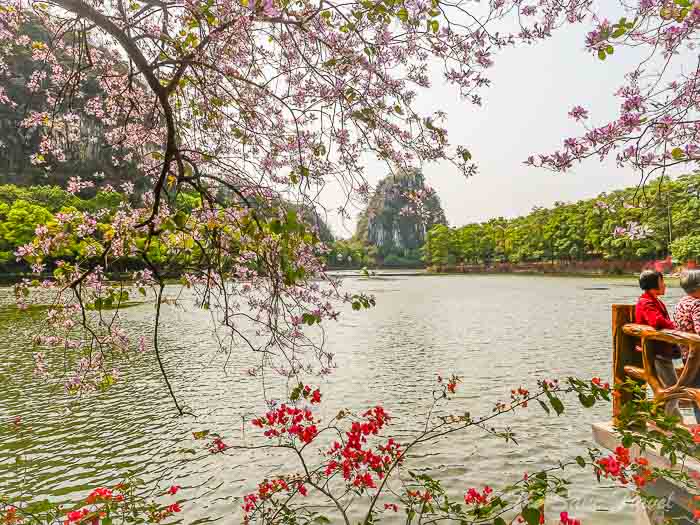
How to get there
The distance between Guangzhou and Zhaoqing is approximately 120 kilometres, and the typical high-speed train journey takes around 30 minutes. Numerous trains depart daily from Guangzhou South Railway Station to Zhaoqing.  Upon arrival at Zhaoqing East High-Speed Railway Station, travellers can take either bus 205 or K02 to reach Seven Star Crags North Gate Station, where they should disembark and walk for approximately ten minutes.
Upon arrival at Zhaoqing East High-Speed Railway Station, travellers can take either bus 205 or K02 to reach Seven Star Crags North Gate Station, where they should disembark and walk for approximately ten minutes.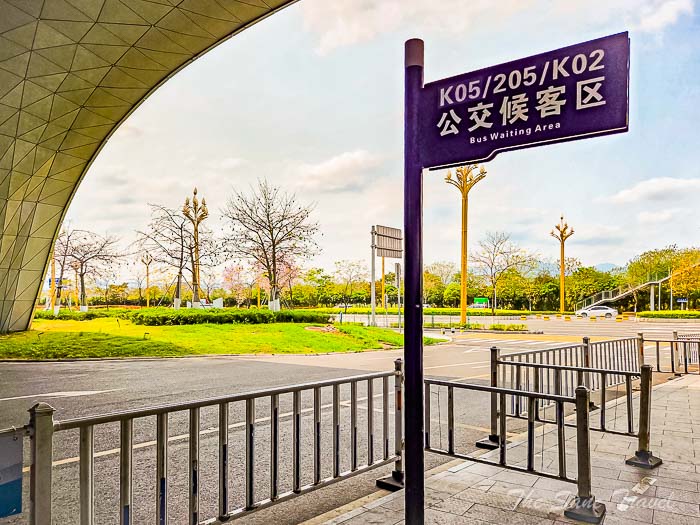
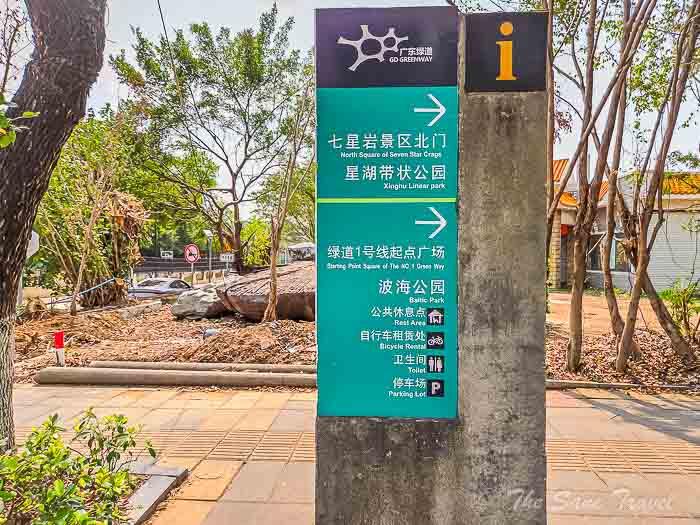
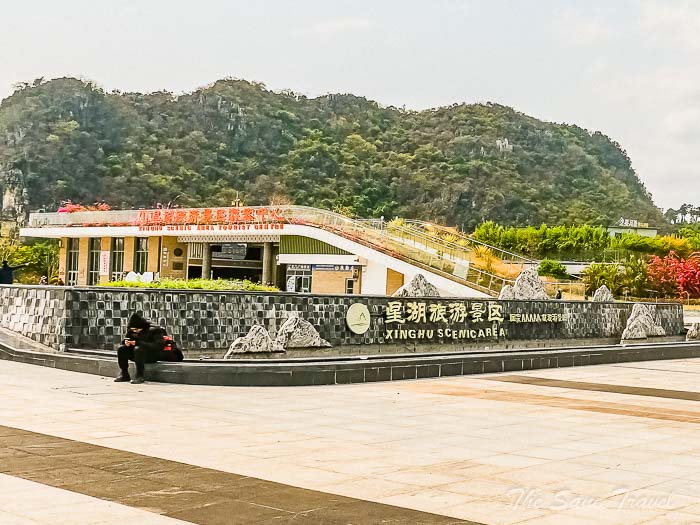 Tickets can be purchased at the information centre, and visitors are encouraged to start their visit with a boat tour of the Wetland Park.
Tickets can be purchased at the information centre, and visitors are encouraged to start their visit with a boat tour of the Wetland Park.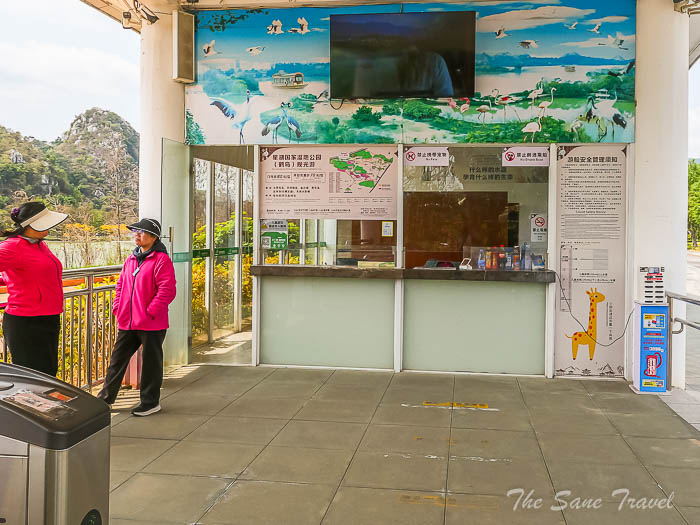
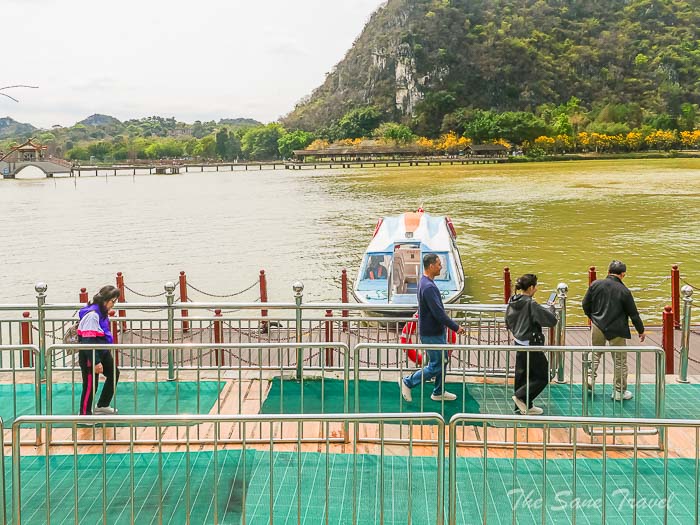
Wetland Park by boat
The Xinghu National Wetland Park features karst caves, lakes, and shoals. Visitors can collect a map outlining recommended tours, which include boat trips and walking routes across several islands. 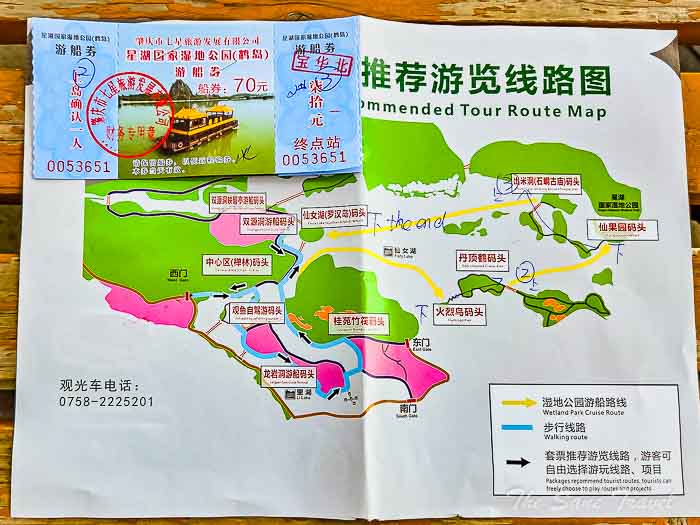 The park's focal point is Fairy Lake, surrounded by over 20 small islands, including Flamingo Island, Red-Crowned Crane Island, and Wild Egret Island.
The park's focal point is Fairy Lake, surrounded by over 20 small islands, including Flamingo Island, Red-Crowned Crane Island, and Wild Egret Island.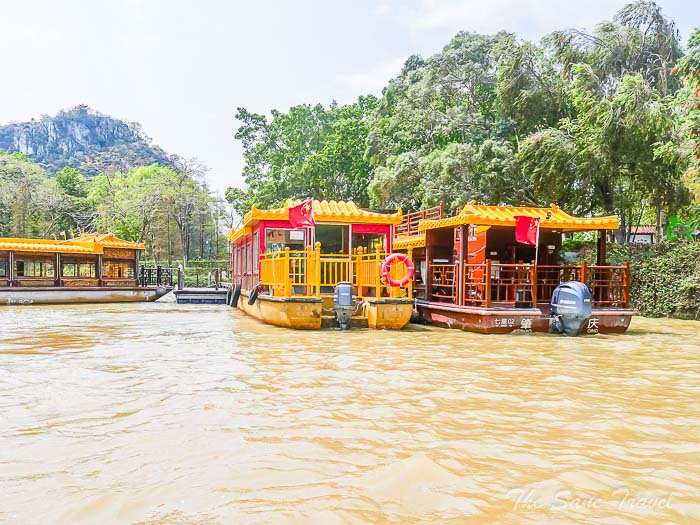
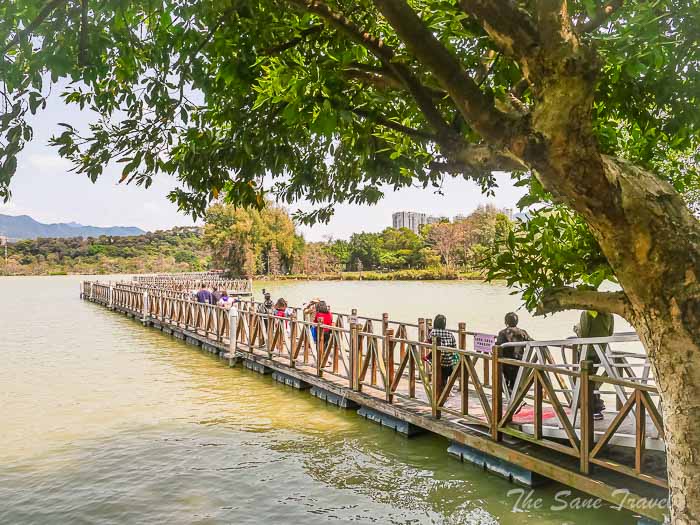
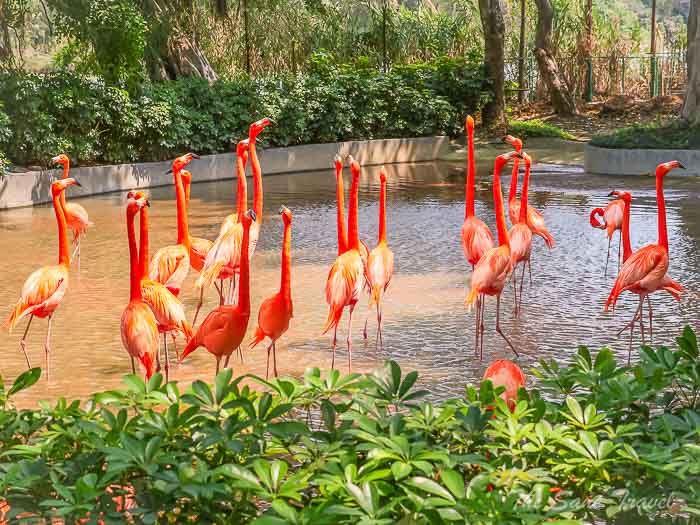 Home to 163 bird species, the park is the largest wild breeding base in South China for red-crowned cranes originating from North China.
Home to 163 bird species, the park is the largest wild breeding base in South China for red-crowned cranes originating from North China. 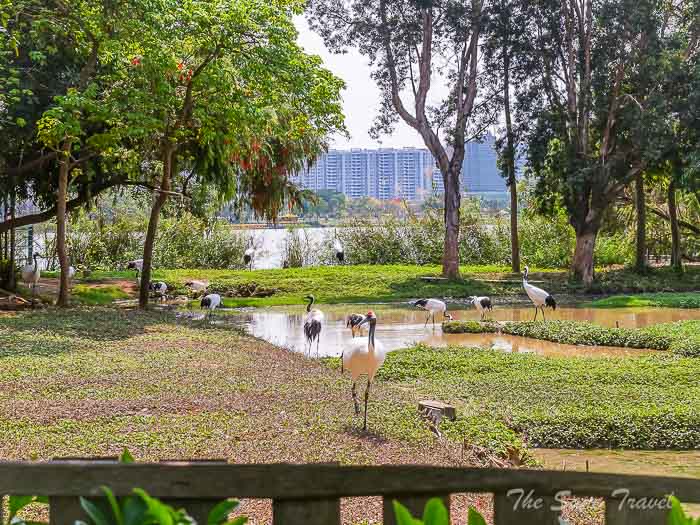 Visitors can also explore the Stone Cave Temple on one of the islands.
Visitors can also explore the Stone Cave Temple on one of the islands.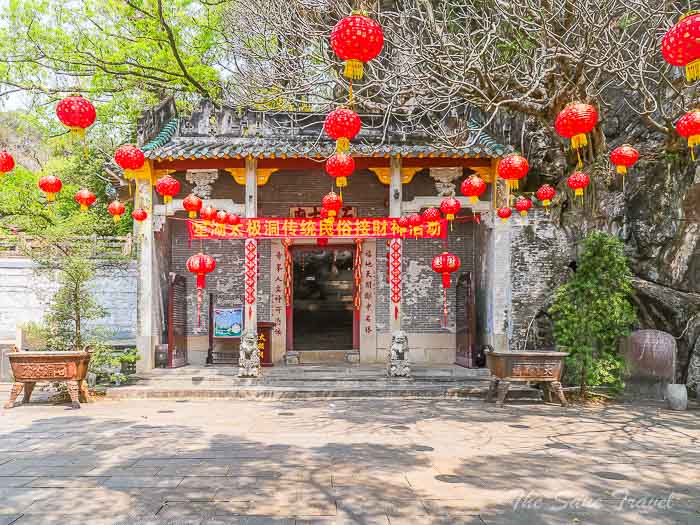

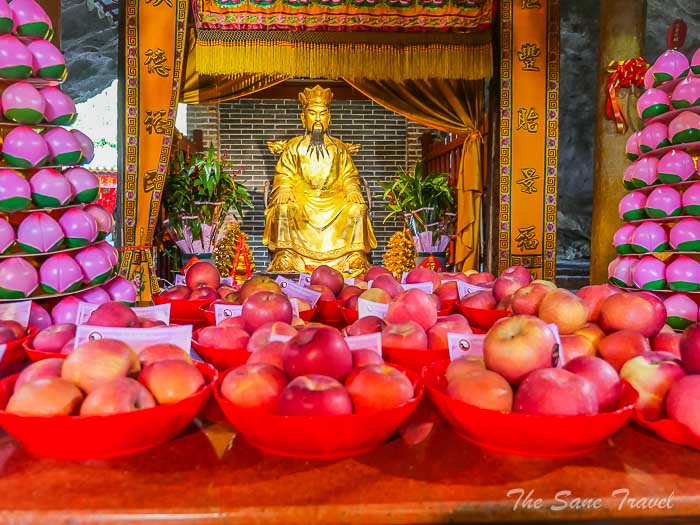 In the temple, visitors can see statues and live turtles in water basins. In ancient China, turtles were regarded as sacred and were considered one of the Four Spiritually Endowed Creatures by followers of Confucianism, alongside the unicorn, phoenix, and dragon. In Taoist tradition, the turtle symbolises the universe. Chinese people believed that turtles possessed a divine ability to resist ageing, making them powerful symbols of longevity. As a result, offerings and prayers were often made to turtles in the hope of attaining a long and healthy life.
In the temple, visitors can see statues and live turtles in water basins. In ancient China, turtles were regarded as sacred and were considered one of the Four Spiritually Endowed Creatures by followers of Confucianism, alongside the unicorn, phoenix, and dragon. In Taoist tradition, the turtle symbolises the universe. Chinese people believed that turtles possessed a divine ability to resist ageing, making them powerful symbols of longevity. As a result, offerings and prayers were often made to turtles in the hope of attaining a long and healthy life.
Travellers have the opportunity to appreciate the bald cypress groves that are growing in the water throughout various locations in the scenic area.
Bald cypresses
The bald cypress is a tall, pyramid-shaped tree that loses its leaves in the autumn and produces cones. It can reach heights of up to 20 metres and widths of up to 9 metres. As the tree ages, it develops a broad base that tapers as it grows taller, with trunk diameters reaching up to 1.8 metres. In wet environments, the tree's roots often form unique knobby structures called "knees" or "cypress knees".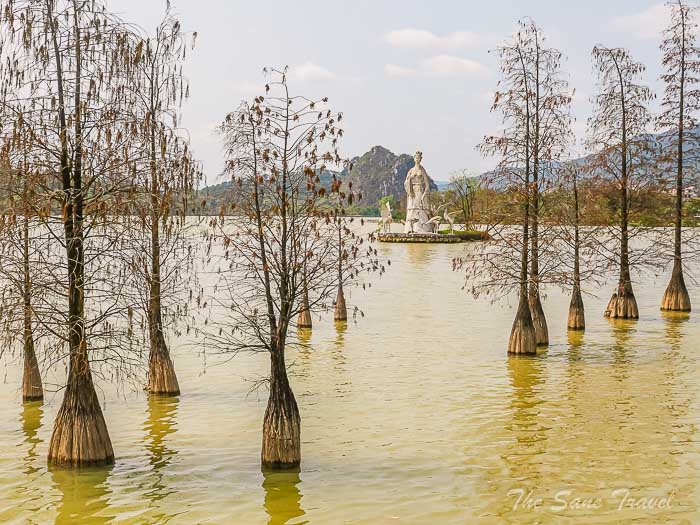
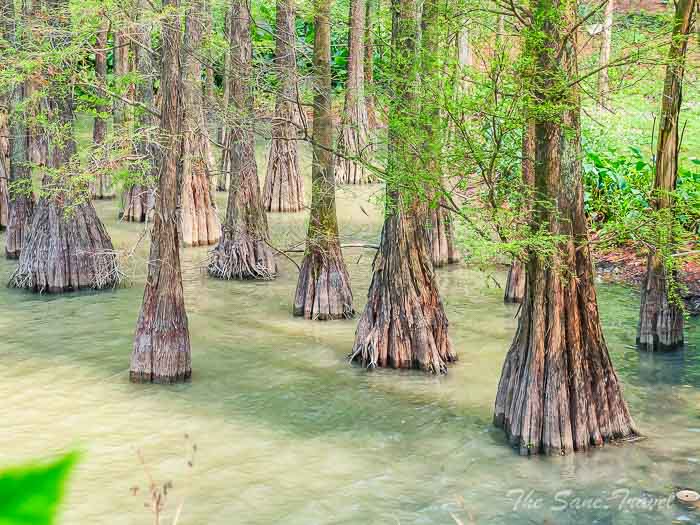
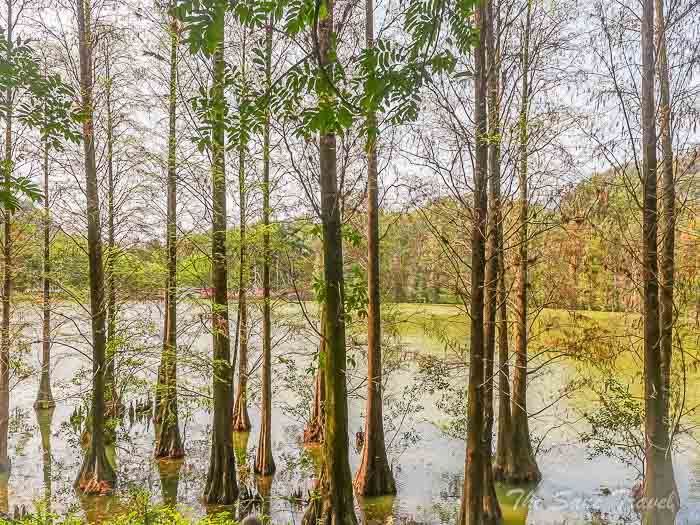
Walking the lake embankment
After completing the boat tour, visitors can stroll along a section of the tree-lined lake embankment and enjoy breathtaking views of the lake and surrounding mountains.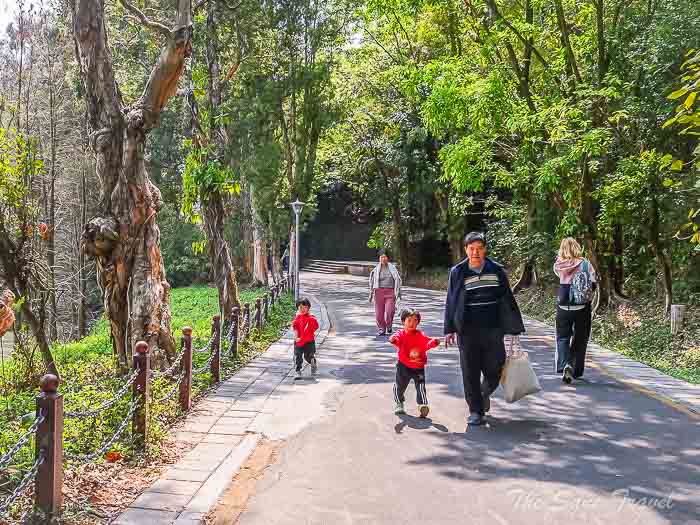

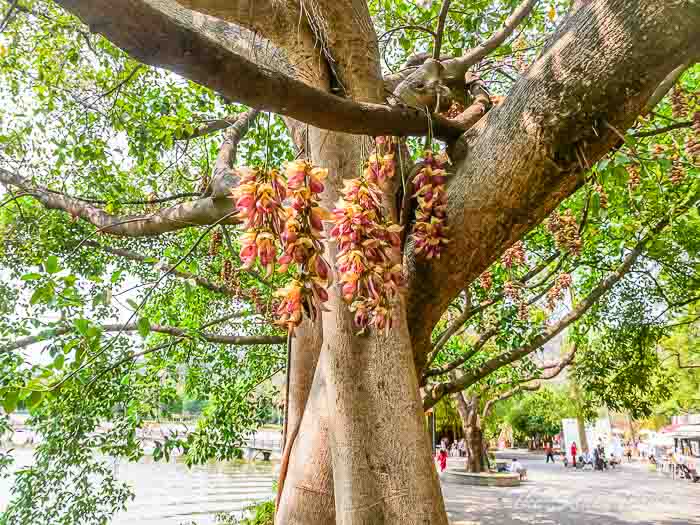
 The interconnected lakes – including Fairy Lake, Central Lake, and Bohai Lake – form a picturesque scene resembling a natural jade sculpture. The seven limestone peaks of Qixingyan, scattered like stars across the lake, are particularly impressive.
The interconnected lakes – including Fairy Lake, Central Lake, and Bohai Lake – form a picturesque scene resembling a natural jade sculpture. The seven limestone peaks of Qixingyan, scattered like stars across the lake, are particularly impressive. 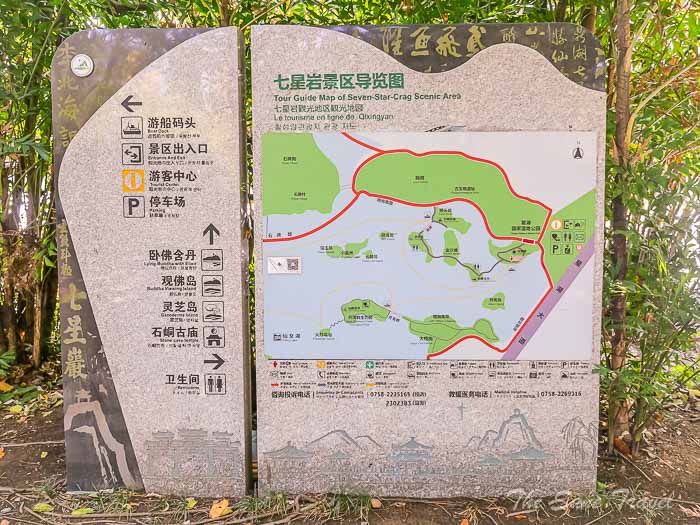 The Holy Light Cave is a must-see attraction for cave enthusiasts, featuring stunning stalactite columns and over 600 cliff carvings. The cave is illuminated with colourful lights, and walking across the wooden bridge creates a fairy tale-like experience. Additionally, visitors can explore petroglyphs and poems within the cave.
The Holy Light Cave is a must-see attraction for cave enthusiasts, featuring stunning stalactite columns and over 600 cliff carvings. The cave is illuminated with colourful lights, and walking across the wooden bridge creates a fairy tale-like experience. Additionally, visitors can explore petroglyphs and poems within the cave.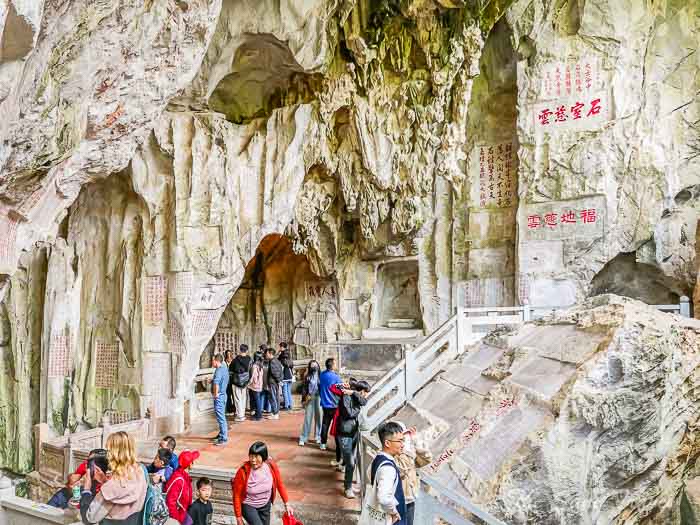
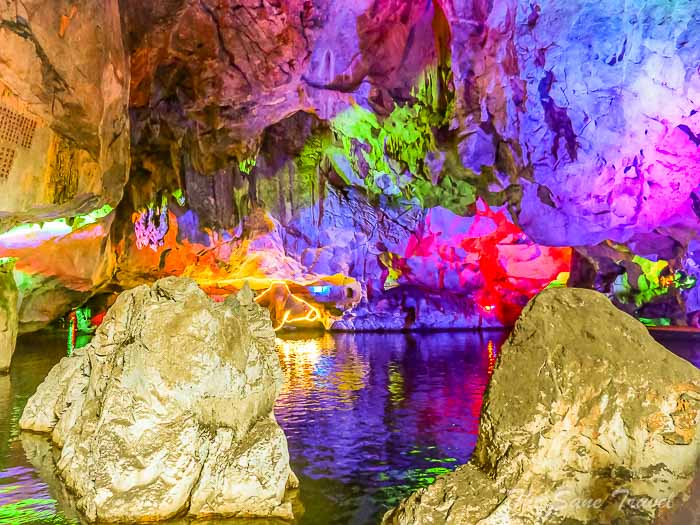
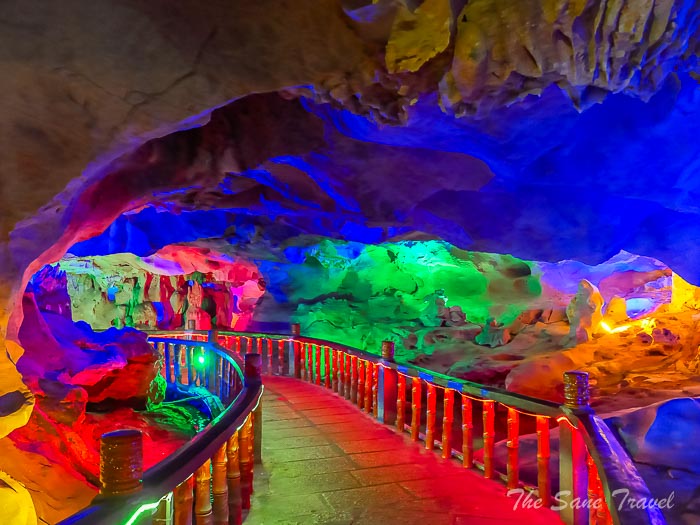 Further along is the Double Source Cave. It can be reached by boat, but an additional ticket is required for the ride.
Further along is the Double Source Cave. It can be reached by boat, but an additional ticket is required for the ride.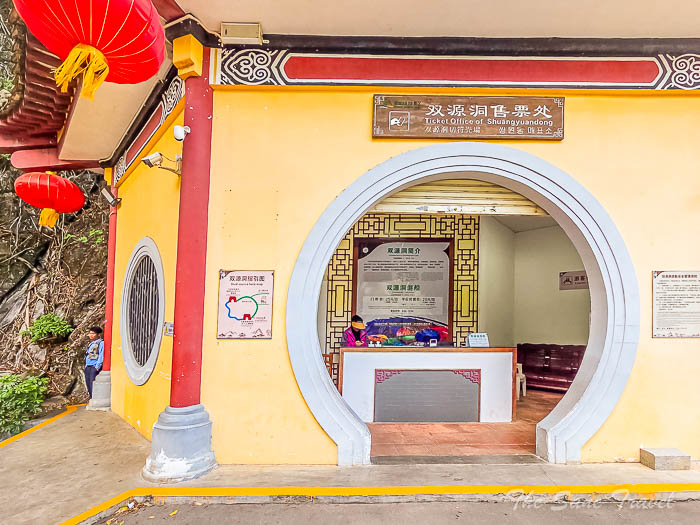
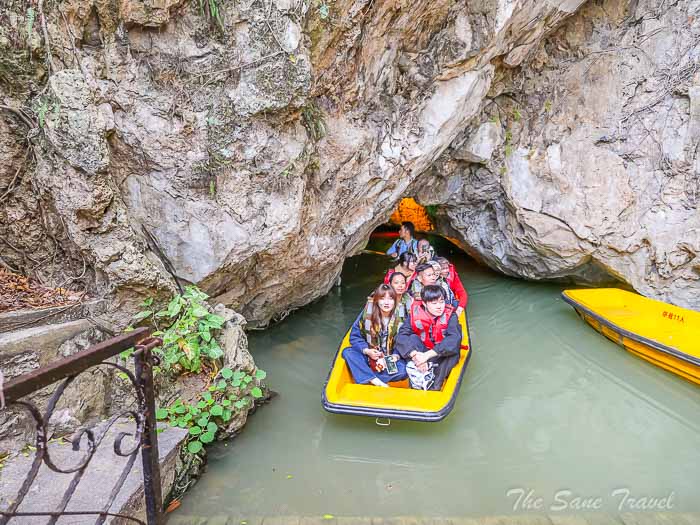

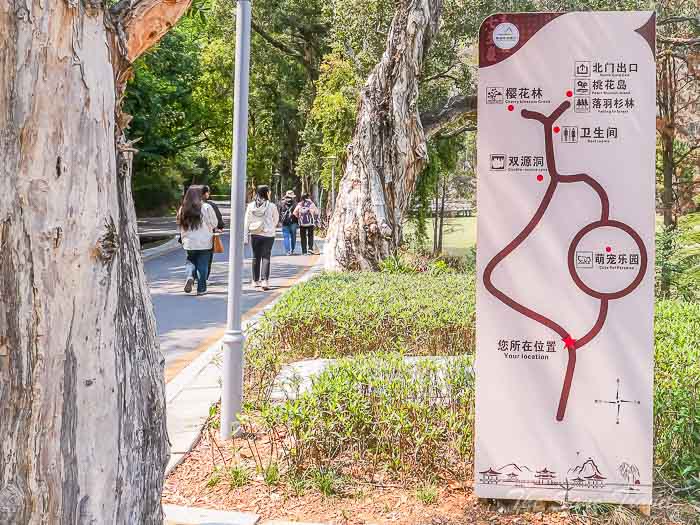
Iron Cable Bridge
The Iron Cable Bridge is a captivating feature nearby, adding to the enjoyment of your stroll.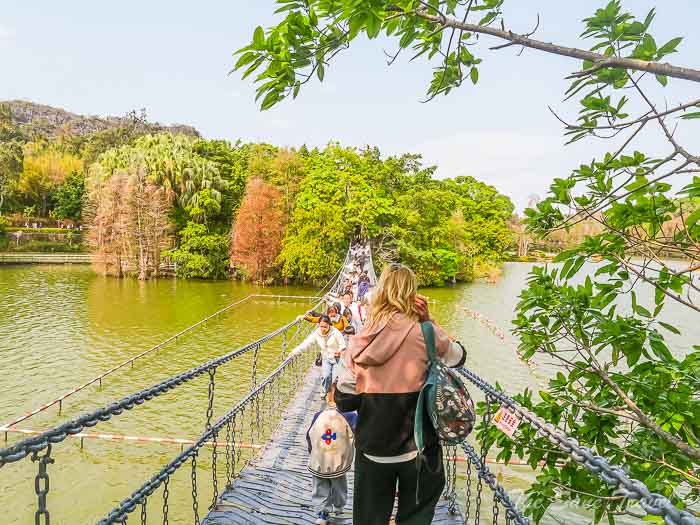
Conclude your visit by returning to the park's North Gate, where you can catch a bus back to the railway station before travelling on to Guangzhou.

Dinghu Mountain area
If you have additional time, you might want to consider visiting the Dinghu Mountain area, which could require an extra day as it covers 11.3 square kilometres. This area is known for its lush forest, woodlands, and waterfalls. Designated as China's first natural reserve in 1979 and part of UNESCO's World Network of Biosphere Reserves, the Dinghu Mountain area is often called the "Oasis on the Tropic of Cancer," the "living museum of natural history," and the "natural oxygen bar".
Practical information
I visited the area in mid-March and recommend this time of year for its pleasant weather and the blooming flowers and trees. The Xinghu Lake Scenic Area is open from 7:30 am to 5:30 pm. Consider using Didi instead of the bus to get from the railway station to the scenic area. It is advisable to spend the whole day exploring the area. Visiting Seven Star Crags would be a valuable addition to your itinerary in the Guangzhou region, alongside Baiyun Mountain, Lotus Hill, and Baomo Garden.
Like it? Pin it!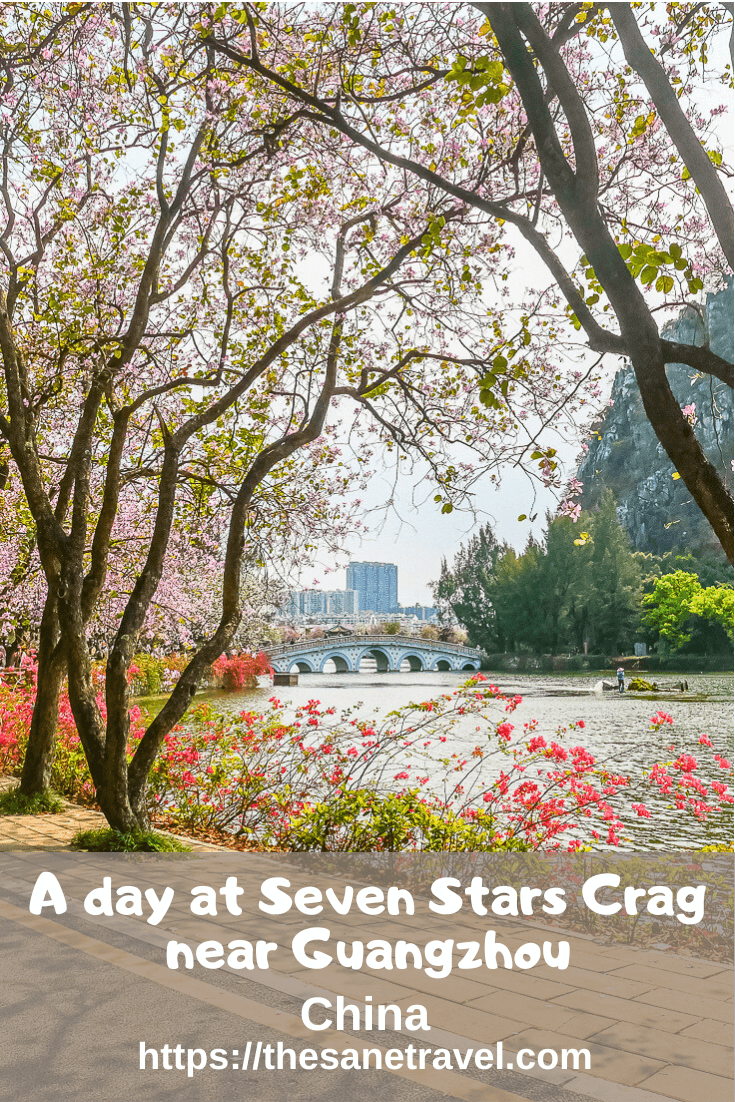
What did you think? Have you been to Seven Star Crags? I would love to hear from you, so please add your comment below.
Author: Anita Sane

About the author
Anita is a part-time traveller, passionate photographer and a retired career woman from Latvia, travelling mostly solo for more than 15 years. She is a skilled travel planner who plans and executes her travels by herself. Anita wants to show you how to travel the world and open your mind to new experiences. Follow her on Facebook, Instagram, Pinterest, Twitter and Bloglovin.

Report
My comments